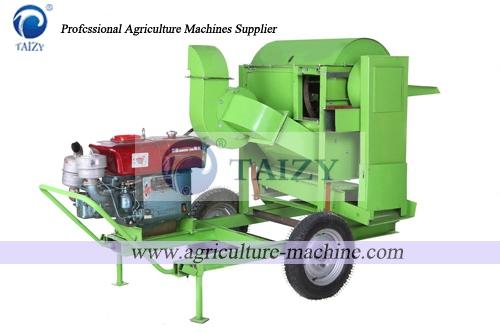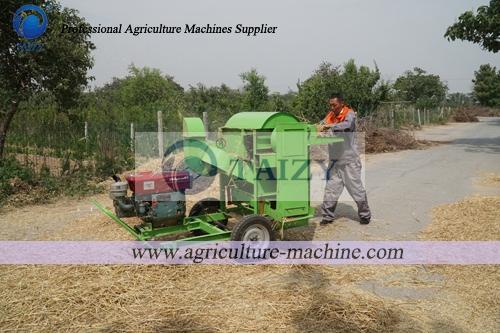Rice thresher plays an important role in the development of rice. Rice is hot, humid, and short-lived. The soil requirements are not strict, and paddy soil is the best. The minimum temperature of seedling germination is 10-12 °C, and the optimum temperature is 28-32 °C. The tillering period is above 20 °C, and the panicle differentiation is about 30 °C. The low temperature makes the branch and the floret differentiation prolong. Heading temperature is 25 ~ 35 °C. The optimum temperature for flowering is about 30 °C, below 20 °C or above 40 °C, fertilization is seriously affected. The relative humidity is preferably from 50 to 90%. Spike differentiation to the filling stage is the key period of fruiting; the balance of nutrient status and high light efficiency are of great significance for improving seed set rate and grain weight. A large amount of water and mineral nutrients are required during the heading period; at the same time, it is necessary to enhance the root activity and extend the functional period of the stems and leaves. About 500 to 800 kg of water is required for each kilogram of rice formed.


Rice is a fibrous root system with adventitious roots, panicles of panicles, and self-pollination. It is an annual cultivated grain. The stalk is erect, 30 to 100 cm high. Leaves two-column alternate, linear lanceolate, leaf membranous, 2-lobed. Panicles loose; spikelets oblong, squashed on both sides, containing 3 small flowers, genus degenerate, leaving only traces, apical florets, scorpion-shaped, awning; stamens; degenerate 2 flowers only Under the bisexual flower, it is often mistaken for glume. Yingguo.
Native to China. It is one of the world’s major food crops. China’s rice planting surface accounts for 1/4 of the national food crops, while production accounts for more than half. The cultivation history has been 14,000 to 18,000 years. It is an important food crop; in addition to edible caries, it can be used to make starch, wine, and vinegar. Rice bran can be used to make sugar, oil, and furfural for industrial and medical use; rice straw is good for feed and papermaking materials and woven materials. Buds and rice roots are available for medicinal purposes.
The emergence of rice thresher replaces the manual threshing, making the separation quick and convenient
